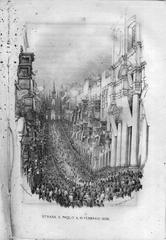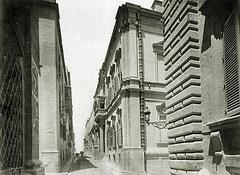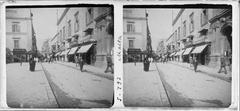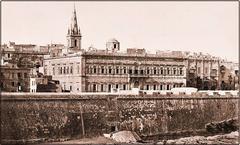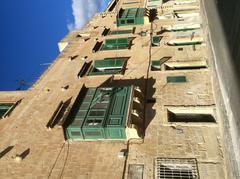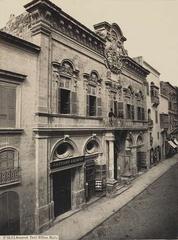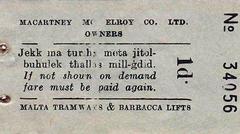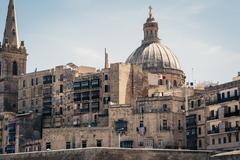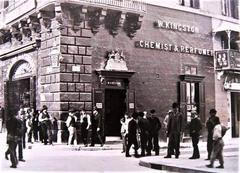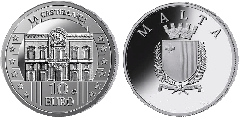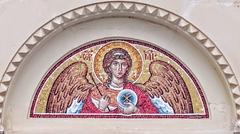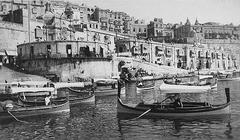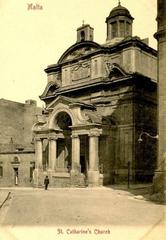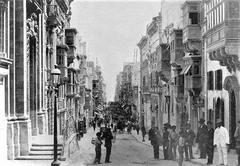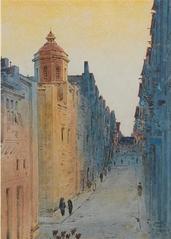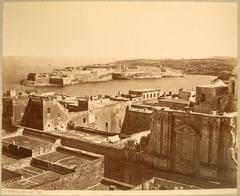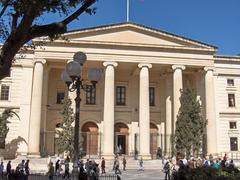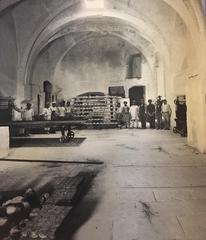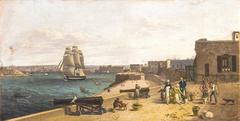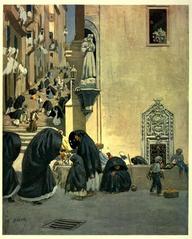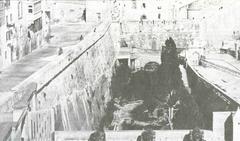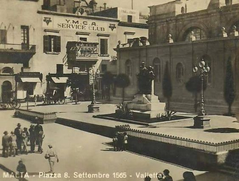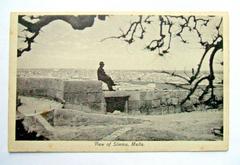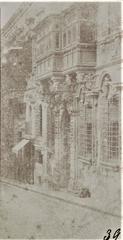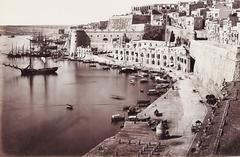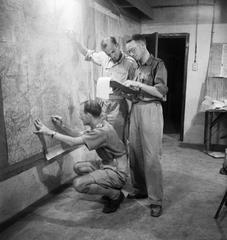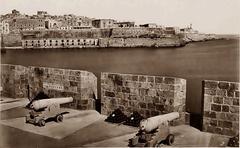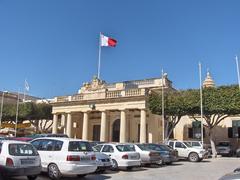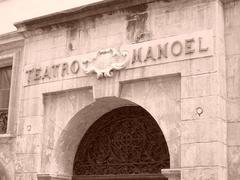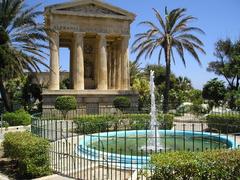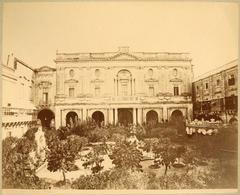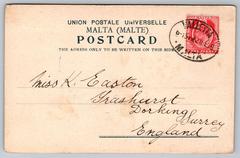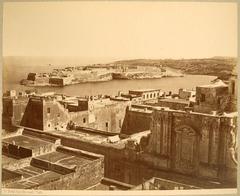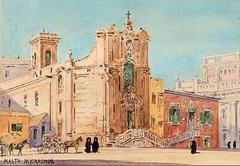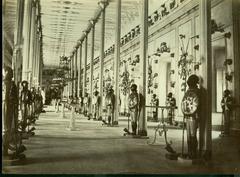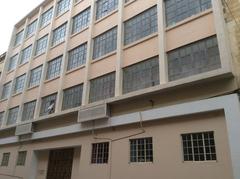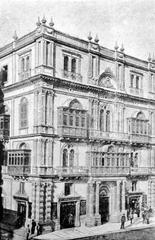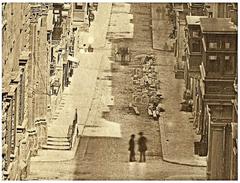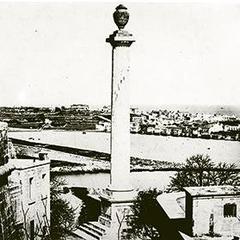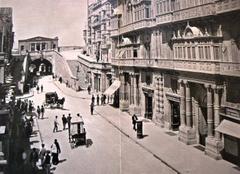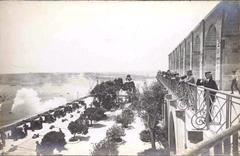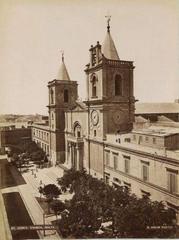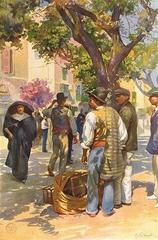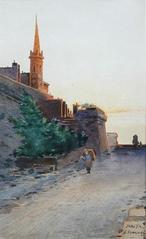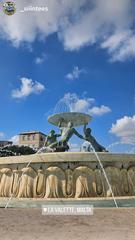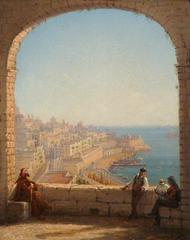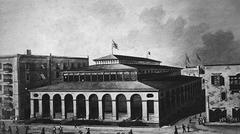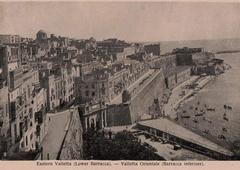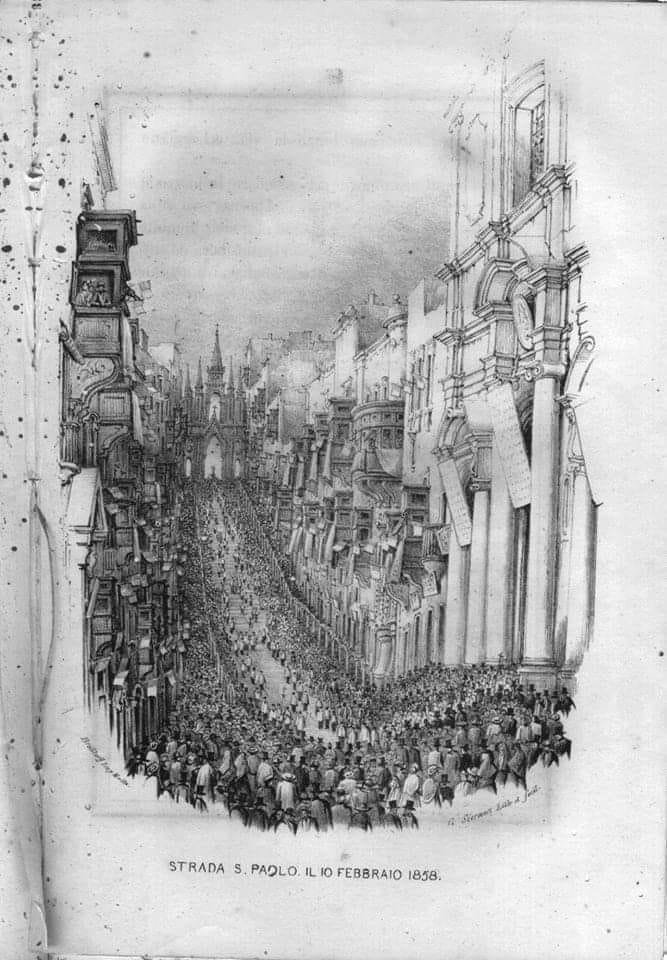
Collegiate Parish Church of St Paul’s Shipwreck, Valletta, Malta: Visiting Hours, Tickets, and Historical Significance
Date: 14/06/2025
Introduction
The Collegiate Parish Church of St Paul’s Shipwreck—nestled in the heart of Valletta—stands as a monument to Malta’s enduring Christian faith and rich artistic legacy. Established soon after the city’s founding in the 1570s, the church commemorates the pivotal shipwreck of St Paul the Apostle on Maltese shores in AD 60—a biblical event that introduced Christianity to Malta and shaped the nation’s identity (Aleteia; Oh My Malta). Renowned for its Baroque architecture, sacred relics, and vibrant community celebrations, the church is both a spiritual sanctuary and a living museum, drawing pilgrims, art lovers, and history enthusiasts from around the world.
This comprehensive guide details the church’s history and cultural importance, provides up-to-date visitor information on opening hours and accessibility, and highlights its artistic treasures and significance in Maltese religious life.
Table of Contents
- Introduction
- Historical Overview: Foundation and Growth
- The Shipwreck of St Paul and Its Maltese Legacy
- Art, Relics, and Architectural Highlights
- Religious and Cultural Role
- Conservation and Restoration
- Visitor Information
- Nearby Valletta Attractions
- Photography and Visual Highlights
- Frequently Asked Questions (FAQ)
- Conclusion
- References
Historical Overview: Foundation and Growth
St Paul’s Shipwreck Church is among the oldest and most significant ecclesiastical structures in Malta. Its roots trace back to 1570, just after Valletta’s foundation, with construction overseen by Girolamo Cassar, the city’s chief architect (Atlas Obscura; Sancti Pauli). As Valletta’s population and spiritual needs grew, the church underwent substantial enlargement, especially during the Baroque period, culminating in its consecration in 1740 (Times of Malta).
Over centuries, the church has evolved architecturally and artistically, reflecting both Malta’s religious devotion and the influence of European art and culture.
The Shipwreck of St Paul and Its Maltese Legacy
The church is dedicated to one of Christianity’s most dramatic episodes: the shipwreck of St Paul, as recounted in the Acts of the Apostles (Acts 27–28). According to tradition, Paul’s arrival in Malta marked the beginning of Christianity on the islands (Oh My Malta). While the exact location remains debated, St Paul’s Bay and St Paul’s Islands are widely celebrated as the landing site. The event is commemorated not only by the church, but also by annual national festivities and a statue on St Paul’s Island (Oh My Malta).
Paul’s three-month stay is credited with the conversion of Publius, Malta’s first bishop, and a series of miracles—moments that cemented the Maltese people’s devotion and their reputation for hospitality and faith (Aleteia).
Art, Relics, and Architectural Highlights
The church’s grandeur lies in both its architecture and its priceless collection of sacred art and relics.
-
Relics: Among its most revered treasures are a wrist bone of St Paul and a marble fragment from the table of his martyrdom in Rome, donated by Pope Pius VII in 1818 (Sancti Pauli). These relics are central to the church’s pilgrimage tradition.
-
Altarpiece: The main altarpiece, a dynamic depiction of the shipwreck by Matteo Perez d’Aleccio, commands the sanctuary with vivid color and movement.
-
Wooden Statue of St Paul: Melchiorre Gafà’s 1659 statue of St Paul—paraded annually in Valletta’s streets during the February 10th feast—remains a masterpiece of Maltese Baroque sculpture (Catholic Travel Guide).
-
Dome and Choir: The dome is adorned with frescoes celebrating St Paul’s ministry, while the choir features carved stalls and a historic organ.
-
Peripheral Chapels: Side chapels, such as that of Saints Crispin and Crispinian, are decorated with exquisite frescoes and house objects d’art donated by generations of benefactors (Times of Malta).
The church’s Baroque architectural style is characterized by a longitudinal nave, side chapels, and a modest—but harmonious—façade, accentuated by twin belfries (Times of Malta).
Religious and Cultural Role
St Paul’s Shipwreck Church is not merely a historical monument, but an active center of Maltese Catholic life. The annual Feast of St Paul’s Shipwreck (February 10) is a highlight, featuring solemn Mass, processions, music, and community celebrations—an event that brings together locals and visitors in a vibrant display of faith and national identity (Very Valletta; Dayhist). The church also hosts daily Mass, confessions, and special liturgies.
As a collegiate parish, it has historically played a central role in religious education, charity, and civic life, with parish records documenting centuries of Valletta’s community history (HMML).
Conservation and Restoration
Ongoing conservation efforts safeguard the church’s artistic and architectural legacy. Recent projects include the restoration of the dome frescoes, the preservation of precious silverware and artifacts, and the maintenance of the wooden statue of St Paul (Times of Malta). The church’s inclusion in Malta’s National Inventory of Cultural Property underscores its national importance (Atlas Obscura).
Visitor Information
Location and Access
- Address: St Paul Street, Valletta, Malta
- Access: Centrally located; within walking distance of Valletta’s main entrance, Republic Street, and attractions such as the Upper Barracca Gardens and St John’s Co-Cathedral. Valletta’s main bus terminal is about a 10-minute walk; taxis and ride-hailing services can drop off nearby (Malta.com).
Opening Hours
- Monday–Saturday: 9:00 AM–5:00 PM (last entry 4:30 PM)
- Sunday & Feast Days: Limited hours due to services
- Always check ahead for seasonal changes and special events.
Tickets and Admission
- Admission: Free; donations encouraged for conservation
- Guided Tours: Available by request, often for a small fee
Accessibility
- The church is wheelchair accessible via ramps at the entrance. Some interior areas have uneven flooring due to historic architecture; accessible restrooms are limited. Contact ahead for special assistance.
Guided Tours and Events
- Guided Tours: Recommended for deeper appreciation of the church’s history, art, and relics.
- Special Events: The church is at the heart of the annual Feast of St Paul’s Shipwreck (February 10), featuring processions, music, and cultural performances (Issuqtalbelt).
Dress Code and Etiquette
- Modest attire required (shoulders and knees covered); hats removed inside.
- Silence and decorum are expected, especially during services.
- Photography is generally permitted for personal use (no flash or tripods during services).
Nearby Valletta Attractions
Combine your visit with other notable historical and cultural sites:
- St John’s Co-Cathedral
- Grandmaster’s Palace
- National Museum of Archaeology
- Upper and Lower Barracca Gardens
All are within a 10-minute walk, allowing for a comprehensive cultural itinerary (thetouristchecklist.com).
Photography and Visual Highlights
Capture the church’s:
- Baroque façade and twin belfries
- Main altarpiece by Matteo Perez d’Aleccio
- Wooden statue of St Paul by Melchiorre Gafà
- Dome frescoes and side chapels
- Annual feast procession (if visiting in February)
Include alt text such as “St Paul’s Shipwreck Church Valletta interior” and “Baroque dome of Collegiate Parish Church of St Paul’s Shipwreck” for accessibility and search optimization.
Frequently Asked Questions (FAQ)
Q: What are the visiting hours?
A: Monday–Saturday 9:00 AM–5:00 PM; limited Sunday hours.
Q: Is there an entrance fee?
A: No; donations are appreciated.
Q: Are guided tours available?
A: Yes, by request or through local tourism offices.
Q: Is the church wheelchair accessible?
A: Yes, with some limitations in historic areas.
Q: What is the best time to visit?
A: Weekday mornings or late afternoons are quieter; major events occur on February 10.
Q: Can I photograph inside?
A: Yes for personal use, except during services.
Conclusion
The Collegiate Parish Church of St Paul’s Shipwreck is a cornerstone of Malta’s spiritual and artistic heritage. Its rich history, sacred relics, and vibrant community life make it a must-see for anyone exploring Valletta. Free admission, central location, and guided tours ensure accessibility for all, while the annual feast and surrounding attractions offer a truly immersive Maltese experience.
For up-to-date information on visiting hours, guided tours, and events, consult the official Malta tourism website and consider downloading the Audiala app for audio guides and cultural insights.
References
- Sancti Pauli
- Times of Malta: Conservation
- Times of Malta: Extensive Account
- Aleteia: The Wreckage That Made a Nation
- Aleteia: 2000 Years Long Christian Tradition
- Issuqtalbelt
- Love Malta
- Very Valletta
- Dayhist
- Catholic Travel Guide
- Atlas Obscura
- Official Malta Tourism Website
- HMML
- The Tourist Checklist
